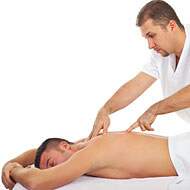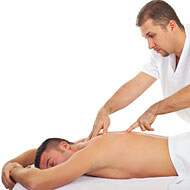Massage after exercise?
As is evident from the number of spas and massage parlors popping up everywhere, we are hooked on to massages. More and more people are discovering the benefits of regular massage therapy - how it can soothe sore muscles, reduce achy joints, remove harmful toxins from the body and even improve immunity. Recently, there are have been a number of studies investigating the advantages of massages performed immediately after exercise.
According to a study published in the journal ‘Science Transitional Medicine’, having a massage after a strenuous workout can actually aid the recovery process. Massage after exercise can improve blood circulation, aid the break down of lactic acid (and preventing muscle injury) and enhance performance. During a heavy workout, micro-tears are created in the muscle tissue.
As these tears heal, there is a high chance of inflammation and pain. While massage after exercise does not prevent these tears from occurring, what it does do is reduces the amount of cytokines in the muscle cells responsible for inflammation. Simultaneously, a deep tissue massage such as a Swedish or sports massage after a workout promotes the growth of mitochondria that are necessary for muscle energy regeneration. The study also shows that massage after exercise works in the same way anti-inflammatory drugs and painkillers operate – to reduce pain.
To determine exactly how much massage therapy can improve muscle recovery, researchers at the Ohio State University found evidence that Swedish massage performed after a heavy workout improved the muscle recovery time and reduced overall swelling and inflammation. The only hitch was that this 2008 study was conducted on rabbits and not humans. While there was a sixty percent improvement in strength of muscles that were massaged as compared to those that were not, the same significant effect could not be seen in human studies. In 2009, Kinesiology and Health Studies professor Michael Tschakovsky and his team of researches set out to prove that massage therapy had no significant effect on muscle recovery and performance. According to the study, massage impairs the reduction of lactic acid in muscles after and may impair the blood flow and recovery after a workout. This was the first study to challenge the belief that the benefits of massage after exercise far outweigh the risks.
In spite of these contradictory studies, the evidence either way is still inconclusive. What experts do agree, however, is that stretching and massage does help prevent long-term injury and combats complaints such as swelling, pain, and fatigue. Massage therapy should be a part of any recovery regime if you are a professional sportsperson or indulge in strenuous and heavy workouts. Whether you decide to have a massage immediately after exercising or wait a while is ultimately up to you.
Read more articles from the General Discussion Category.

 Find Pose
Find Pose

